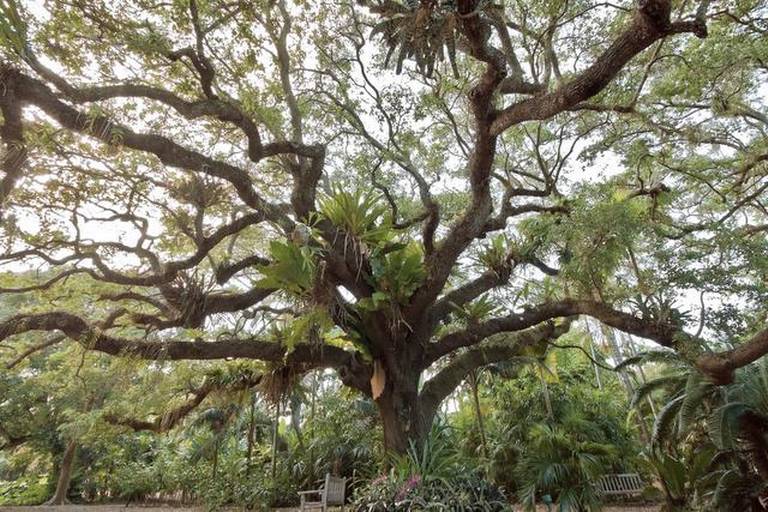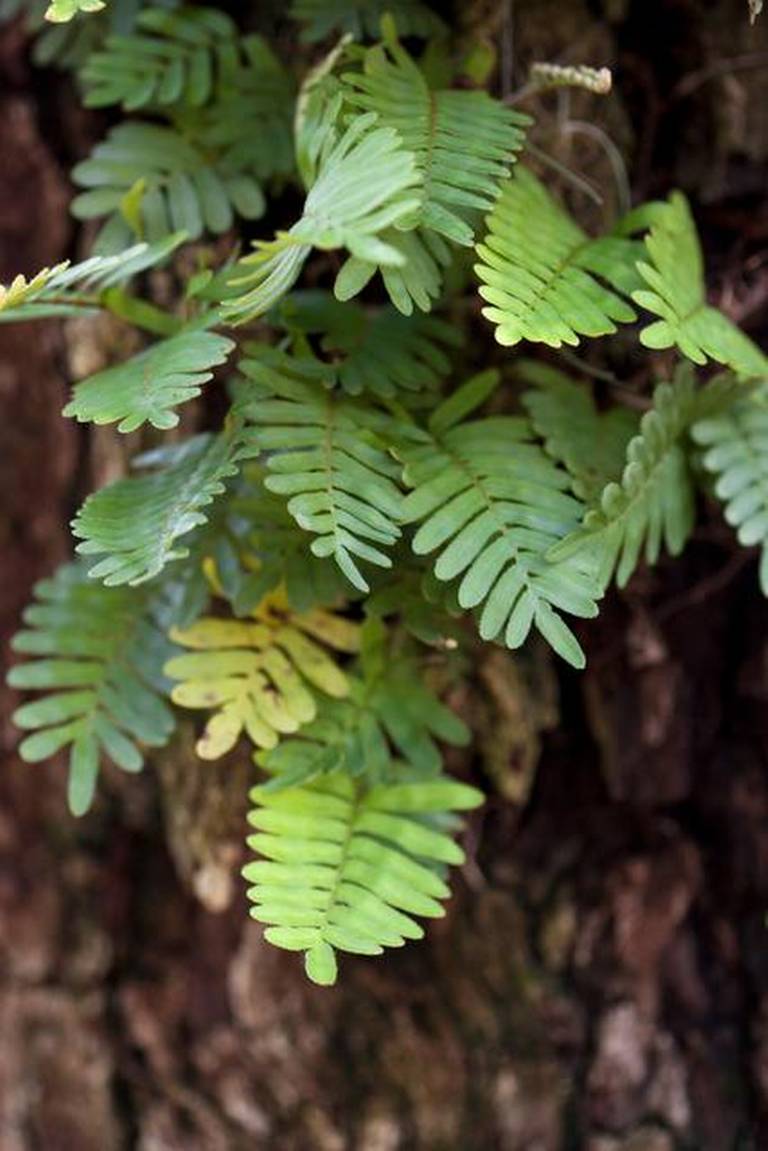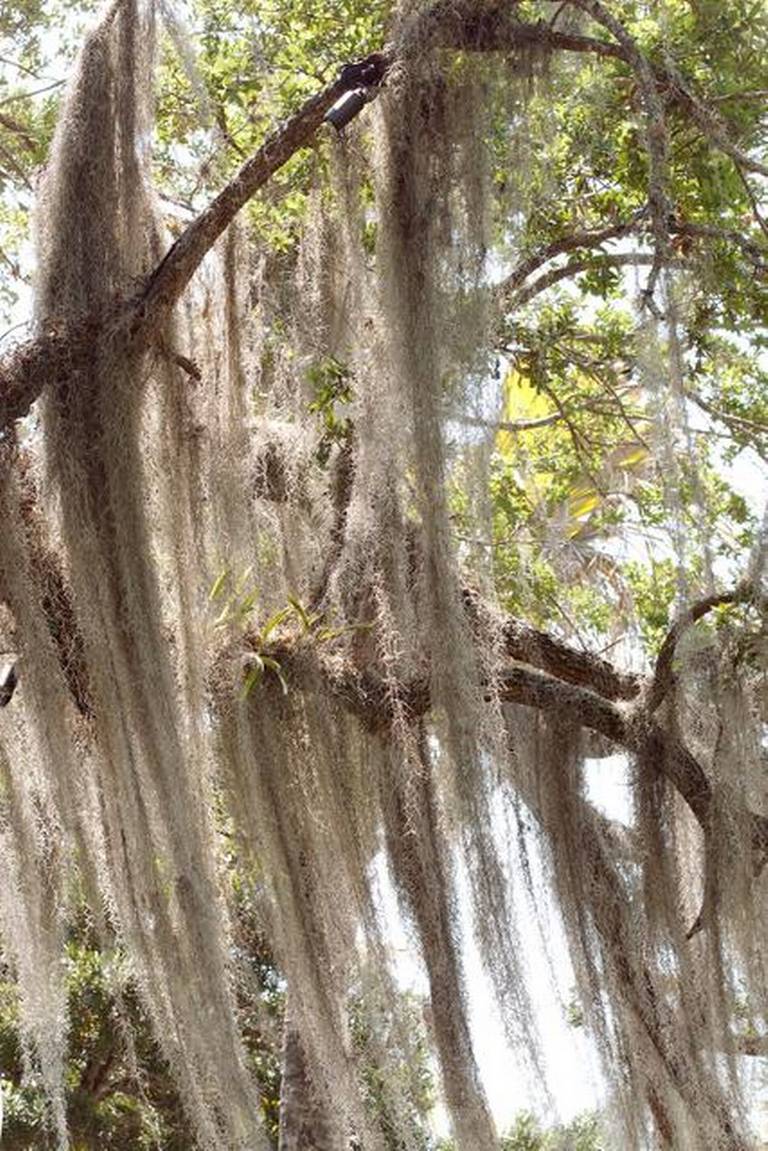An appreciation of the live oak

BY KENNETH SETZER
As published in the Miami Herald, 4/11/15.
For all the biodiversity we are fortunate to host in South Florida’s confluence of the temperate and the tropical, some species of the genus Quercus, the oak, are underrepresented. However, its most common member in our area — the live oak — more than makes up for its brethren’s absence.
Fortunately, it now seems much more common in landscaping than in past decades, which is actually how my love and appreciation of live oaks really deepened.
My street was formerly lined with large but spindly trees. I don’t even recall what they were, but soon after I moved in, they were marked for removal due to disease. I was upset that what little canopy was there would be gone, but the trees were not looking good. Soon thereafter our front lawns all had large depressions where the trees had been.
Then one day, I walked outside to enter an oak forest on the lawn. The homeowners association had wisely decided that live (referring to evergreen) oaks were to replace our trees, and the landscaper had inexplicably unloaded them all on my front lawn.
I walked among the 25–30 young oaks with their root balls all bound up in burlap like Christmas trees waiting for a buyer. I wish they could have stayed in my yard and made my own oak woods, but I am grateful for the one live oak planted on my lawn about eight feet from the street. And I encourage you to consider live oak for your next landscape, garden or specimen tree.
Live oaks will never win a tallest tree contest, but width — that’s another thing entirely. They become sprawling, octopus-like. I see them as spreading out arms to encompass all that’s beneath their branches.
And they do harbor loads of life — resurrection fern (Pleopeltis polypodioides) seems to favor live oaks’ rough bark, and after a good rain looks like Green Man’s beard. Spanish moss (Tillandsia usneoides) is a common companion, draping oak limbs in a Southern Gothic scene, like curtains. Live oak looks sort of naked without it.
Look closer: its trunk is home to fruticose and foliose lichen, and tiny tillandsias, while its branches host larger tillandsias like T. fasciculata, T. utricularia, T. recurvata. Even large bromeliads can find a place. Neoregelias can be trained up the trunk and live happily there among staghorn ferns. Orchids once adorned live oaks in large numbers.
Now as to live oak champions, it seems semantics matter. Does champion or biggest mean tallest, or most volume, or widest spread? American Forests lists the Seven Sisters Live Oak in Mandeville, Louisiana, as champion live oak in its register of big trees. It’s said to be 1,500 years old, 68 feet tall with a crown spread of 139 feet! Not incredibly tall by tree standards, but its winding limbs are so long they touch the ground at several points.

The trademark sprawling canopy of the live oak
As for Florida’s champion, the Cellon Oak in LaCrosse, north of Gainesville, is listed as over 79 feet tall and 160 feet wide, which would surpass the Seven Sisters Oak. Jacksonville’s Treaty Oak is listed on its plaque as 70 feet tall with a trunk circumference of 25 feet, thus avoiding the crown spread debate. It’s also estimated to be about 250 years old, which makes me question the great age of the Seven Sisters Live Oak.
As lumber it is noted as difficult to work but extremely tough. While the USS Constitution’s keel and deck are made of white oak, it is the live oak hull that earned it the moniker “Old Ironsides.” Without access to live oak, our adversaries’ navies of the past were at a real disadvantage.
Caring for live oaks is pretty much zero effort. Once watered a few times, they get settled and develop deep taproots, can tolerate temporary inundation, even of salt water, and are wind resistant. They are noted for being able to thrive in nearly any soil type, even clays, though they prefer well-drained loamy soil with some organic nutrients present.
Avoid planting live oak too close to a street or walkway, due to its sprawling nature. You can minimize the sprawl by planting oak among competing plants. Remember too, that the lower limbs on the side nearest the street need to be pruned to allow about 15 feet of clearance to avoid interference with traffic and pedestrians.

Resurrection fern attached to the shady side of an oak
While trees in a wild setting don’t require pruning, those growing solitarily, as in landscaping, do for various reasons. Hire a certified arborist for this task, not just a guy with a saw and a truck.
This icon of the sultry south is a host for at least three butterflies, provides shelter for countless animals and food in the form of acorns for raccoons, squirrels, deer and even an acorn-based coffee for us. While I’ll pass on acorn coffee, we can all be glad that Q. virginiana survived the last ice age to grace us with its grand and humbling presence.

Ghostly, silvery southern Spanish moss is actually related to the pineapple.
